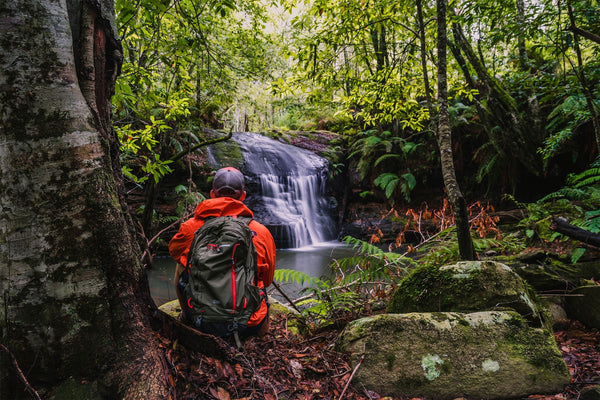
How to pack your backpack for a hike
How to pack your backpack for a hike
Packing your backpack efficiently can make a huge difference on your hike. A well-packed bag ensures you have easy access to your essentials and keeps the weight balanced for comfort.
Here's how to pack your backpack step by step:
1. Choose the Right Backpack or Rucksack
-
Ensure the size of your backpack suits the length and difficulty of your hike. A day hike typically requires a 30L to 40L pack, while overnight hikes may require a 50L or larger backpack or rucksack.
2. Lay Out Your Gear
-
Before packing, spread all your gear out so you can see everything. This way, you can make sure you’ve got all the essentials and nothing is missing.
3. Start with Heavy Items on the Bottom
-
Tent, Sleeping Bag, and Sleeping Pad (if applicable): If you're doing an overnight hike, place your tent, sleeping bag, and pad at the bottom of the pack. These are the heaviest items, and you want them close to your back to maintain balance.
4. Pack Lighter Items Above the Heavy Stuff
-
Clothing: Your clothing can be rolled up or stuffed into a compression sack for efficiency. Place them in the middle of the pack.
-
Extra Food and Snacks: Keep snacks, energy bars, and any extra food in an easily accessible section, so you don’t have to unpack everything to grab a bite.
5. Organize Smaller Items into Compartments
-
First Aid Kit, Headlamp, and Knife: These items should be easily accessible, so pack them in the top of your backpack or in outer compartments. A headlamp is especially important for emergency situations.
-
Map, Compass, or GPS: These should be packed in a quick-access pocket or side compartment. You’ll want them easily reachable in case you need to navigate on the trail.
6. Water and Hydration
-
Water Reservoir or Bottles: Hydration is essential! Pack your water reservoir or bottles in dedicated hydration compartments. If using a reservoir make sure the tube is easily accessible. Caribee has both 2L and 3L Reservoirs available for purchase.
7. Keep Rain Gear Handy
-
Rain Jacket, Poncho, or Pack Rain Cover: Keep your rain gear on the outside or at the top of your bag. Weather can change quickly, and you want to be able to access this gear without unpacking everything.
8. Attach Gear to the Outside
-
For items like trekking poles, an extra jacket, or a sleeping pad that don’t fit in your pack, use the external straps and loops on your backpack to secure them.
9. Maintain Balance and Comfort
-
Distribute Weight Evenly: When packing, make sure the weight is balanced. Keep the heaviest items (like your food and water) close to your back and centered to avoid straining one side of your body.
-
Adjust Shoulder Straps: After packing, make sure the backpack fits comfortably and the weight is evenly distributed. Adjust the shoulder straps and hip belt to keep the weight off your shoulders and evenly spread across your hips.
10. Don’t Overpack
-
Always remember to pack light—every extra item can weigh you down. Prioritize only what you absolutely need for the hike and leave non-essential gear behind.
Quick Checklist of Day Hike Essentials:
-
Water
-
Food & snacks
-
First aid kit
-
Map & compass
-
Multi-tool or knife
-
Layered clothing (extra jacket, hat, gloves)
-
Headlamp or flashlight
-
Emergency shelter (e.g., emergency blanket)
-
Rain gear
-
Sunscreen & bug repellent
-
Trekking poles (if needed)
-
Garbage bag
Packing your backpack this way will keep you organized, balanced, and ready for whatever the trail throws your way. Enjoy your hike!

